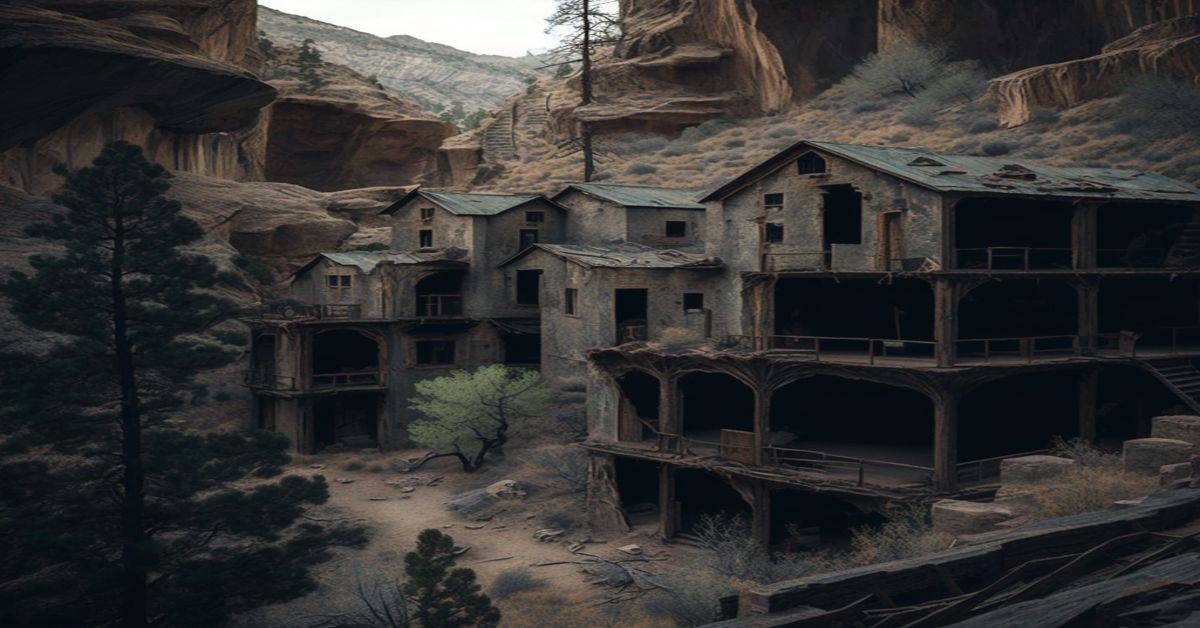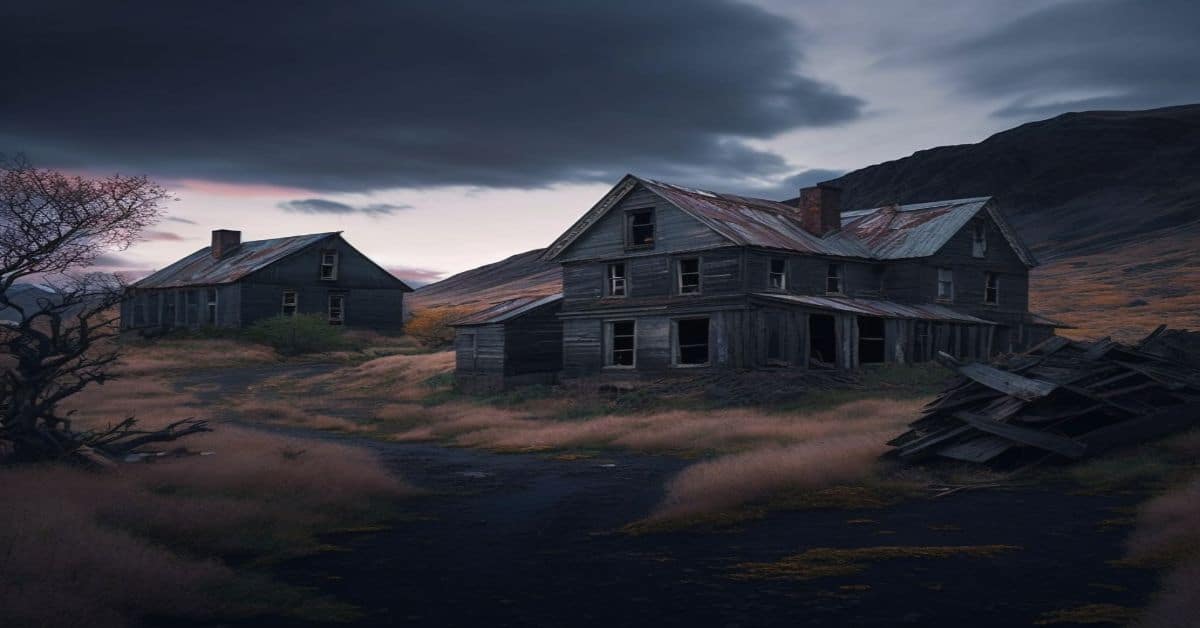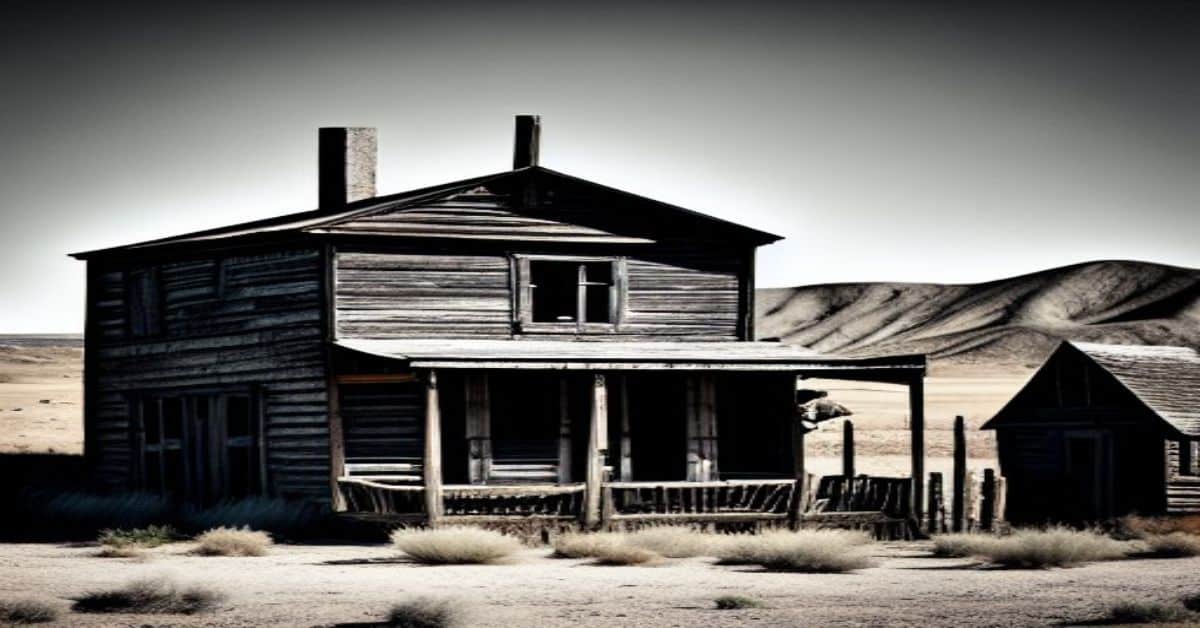Located in Summit County, Utah, Rockport was once a thriving town with a population of around 200 people. However, today, the town is nothing more than a ghost town with only a few foundations and walls remaining. The government bought all the land in 1950 and built the Rockport Reservoir, erasing the town from existence.
In this article, we will explore the history and origin of Rockport, its growth and decline, and the present-day remains that offer a glimpse into its past.
Founded in 1860, Rockport was originally known as Crandall. The town was named after the rock fort built by its residents, which served as a defense against Indian raids. The town’s population grew steadily and received its first post office in 1872.
However, the town’s fate was sealed when the government bought all the land in 1950 and built the Rockport Reservoir. Today, only a few remnants of the town remain, serving as a testament to its once-thriving past.
In the following sections, we will delve deeper into the history of Rockport, its growth and decline, and the present-day remains that offer a glimpse into its past.
Key Takeaways
- Rockport was founded in 1860 and was originally known as Crandall.
- Economic factors, including the decline of the mining industry in the surrounding areas caused the town’s decline.
- The government bought all the land in 1950 and built the Rockport Reservoir, which flooded the entire town.
- Today, visitors can observe the remaining foundations and walls, which offer a glimpse into the town’s past and serve as a testament to the resilience of small towns.
History and Origin
The history and origin of Rockport, formerly known as Crandall, can be traced back to the year 1860 when early settlers founded the town. Founding community members constructed a rock fort, leading to the town’s renaming as Rockport.
In 1872, it obtained its first post office, and the population grew to around 200 people.
Throughout its history, Rockport served as a small community for ranchers and farmers. The town’s government eventually bought all the land in 1950, turning the area into Rockport Reservoir.
Today, some of the foundations and walls of the original town can still be seen, and old dirt roads become visible when the water level is low. Despite its past as a ghost town, Rockport’s history and origin continue to fascinate historians and visitors alike.
Population and Growth
Rockport experienced moderate level of population growth, with an estimated 200 residents at its peak. However, the town’s population began to decline as economic factors played a significant role in its demise. With the decline of the mining industry in the surrounding areas, many residents moved away in search of better economic opportunities.
The town’s decline was also accelerated by the government’s decision to buy all the land in 1950 and build the Rockport Reservoir, which flooded the entire town. Today, only a few foundations and walls remain, serving as a reminder of the once-thriving community.
Despite its small size and brief existence, Rockport’s history is a testament to small towns’ resilience and economic factors’ impact on their growth and decline.
Present Day Remains
Today, visitors can observe a few remaining foundations and walls in Rockport, serving as a testament to the town’s history and the impact of economic factors on small communities.
The abandoned structures are scattered throughout the area and can be seen among the natural surroundings.
The town’s location near the Rockport Reservoir has contributed to preserving some of its structures, as the reservoir has prevented the demolition of the remaining foundations and walls.
Despite the limited remains, Rockport still attracts visitors seeking to connect with the town’s history and learn about the lives of its former residents.
The surrounding area’s natural beauty also provides a picturesque backdrop for those exploring the remnants of the old town.
However, visitors are reminded to respect the remaining structures and not to disturb or remove any artifacts, as they are important pieces of Rockport’s history.
Frequently Asked Questions
What led to the decline and eventual abandonment of Rockport as a town?
Rockport’s decline as a town can be attributed to several factors such as the government’s acquisition of all the land in 1950, the Rockport Reservoir’s construction, and its inhabitants’ subsequent displacement. The consequences of these events led to the eventual abandonment of the town. An analysis and interpretation of Rockport’s historical significance highlights its role as a pioneer settlement and its contribution to Utah’s early history.
Are there any notable events or tragedies that occurred in Rockport’s history?
Mining accidents and natural disasters mark Rockport’s history. The town experienced a devastating fire in the late 1800s, and in 1901, a mine explosion killed 20 people. In 1938, a flood destroyed much of the town.
What was the daily life and economy like for the residents of Rockport?
Residents of Rockport had a simple daily routine centered around farming, ranching, and hunting. Some residents worked at the sawmill or the coal mine. The economy was based on agriculture and natural resources.
Are there any rumored or documented ghost sightings in the area?
No documented ghostly sightings or local legends are associated with Rockport, Utah. However, paranormal investigations have been conducted due to the town’s haunted history.
Has any archaeological or preservation work been done on the remaining foundations and walls?
Excavation techniques have not been used to preserve Rockport’s remaining foundations and walls. However, the town’s cultural significance has been recognized and efforts have been made to document and share its history through photos and other means.


